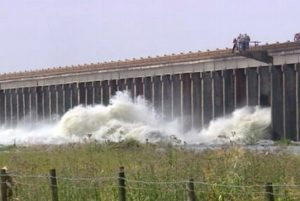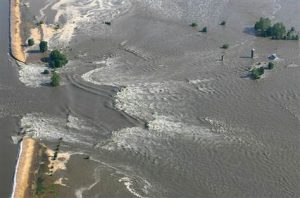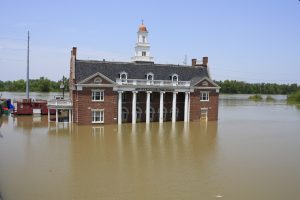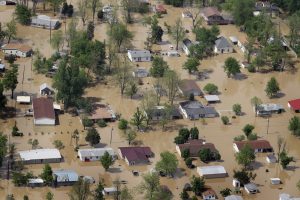
 As a kid, I remember that whenever we were sitting at an intersection that was very busy, causing us to have to wait seemingly forever to be able to get across the intersection, one of my parents would say something like, “Wow!! Who opened the floodgates?” Of course, I didn’t know what a floodgate was then, and I just thought they were referring to a flood of vehicles, which they were, and they probably didn’t think about what a real floodgate was either. It was just a funny saying to us, but in reality, a floodgate is a very important flood preventative tool. I guess that our version of floodgates meant the same thing, except in vehicles and not in water.
As a kid, I remember that whenever we were sitting at an intersection that was very busy, causing us to have to wait seemingly forever to be able to get across the intersection, one of my parents would say something like, “Wow!! Who opened the floodgates?” Of course, I didn’t know what a floodgate was then, and I just thought they were referring to a flood of vehicles, which they were, and they probably didn’t think about what a real floodgate was either. It was just a funny saying to us, but in reality, a floodgate is a very important flood preventative tool. I guess that our version of floodgates meant the same thing, except in vehicles and not in water.
On May 15, 2011, the United States Army Corps of Engineers opened the floodgates in the state of Louisiana along the Mississippi river. This was an effort to save larger cities located along the Mississippi, like Baton Rouge and New Orleans, from flooding. The Mississippi was already heading for critical stages, and it was only expected to get worse. The flooding was expected to cover up to three thousand square miles, and it had the potential to affect up to 25,000 people. This was the first time in forty years that the river levels have forced the opening of the floodgates. I don’t know how often floodgates are utilized in other areas to prevent flooding, but when people live in flood prone areas, they have to use whatever mean necessary to protect themselves and their property from damage and death.
The Mississippi River floods in April and May 2011 were among the largest and most damaging recorded along that river in the past century. The flood was comparable in extent to the major floods of 1927 and 1993. From April 14–16, the storm system that was responsible for one of the largest tornado outbreaks in US history also produced large amounts of rainfall across the southern and midwestern United States. Then two more storm systems, each with heavy rain and tornadoes, hit in the third week of April. In the fourth week of April, from April 25–28, another and even more extensive and deadly storm system passed through the Mississippi Valley dumping more rainfall resulting in deadly flash floods. The unprecedented extensive rainfall from these four storms, combined with springtime snow melt from the Upper Midwest, created the perfect conditions for a 500-year flood along the Mississippi.
The purpose of opening the floodgates was to take some of the pressure off of the levees, in the hope of preventing the breech of the levees. Most of the time, it works pretty well, like when the city of Casper, Wyoming, where I live opens up the gates at the area lakes and while the river runs high for a time, there are 
 very few places where it spills over the bank. Unfortunately, the Mississippi river still spilled over its banks, and broke levees. I don’t think anyone could have really prevented the monster floods that hit the area in 2011, or even in 1927 or 1933, but they couldn’t focus on that right then, because they had to do whatever they could to prevent. In the end, the flood came and the damage was done.
very few places where it spills over the bank. Unfortunately, the Mississippi river still spilled over its banks, and broke levees. I don’t think anyone could have really prevented the monster floods that hit the area in 2011, or even in 1927 or 1933, but they couldn’t focus on that right then, because they had to do whatever they could to prevent. In the end, the flood came and the damage was done.


Leave a Reply